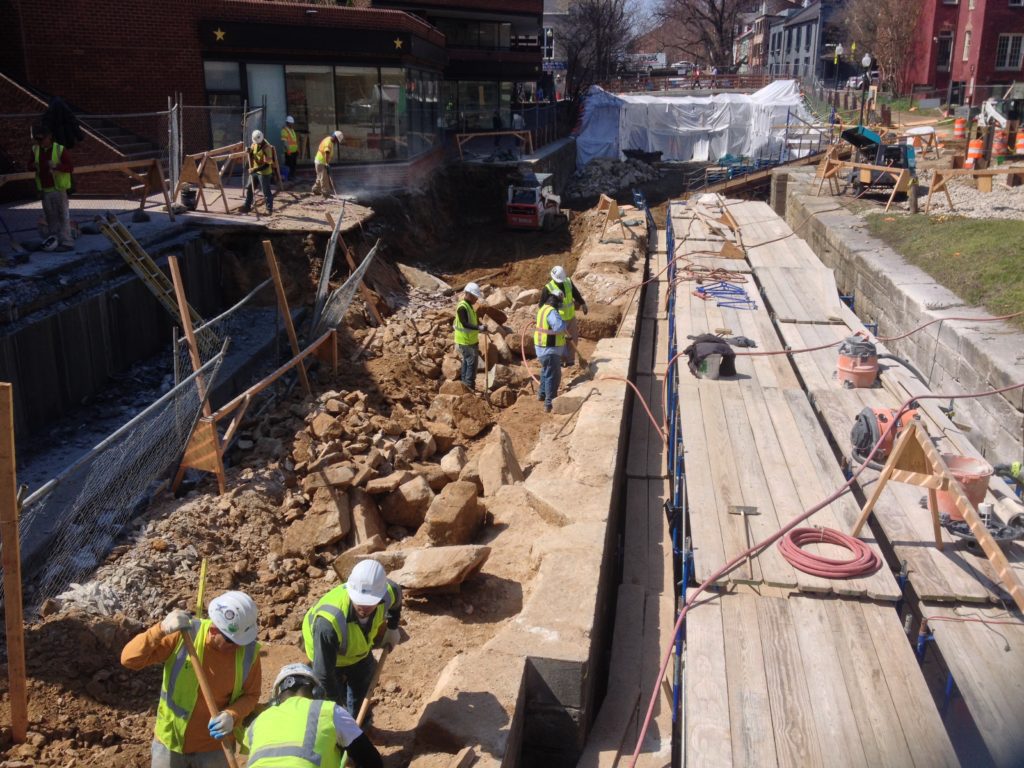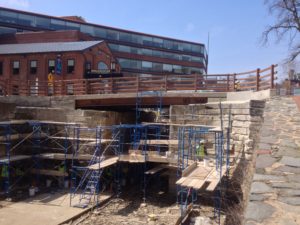Making the Canal Great Again via High Line
By • April 5, 2017 0 609

Concern for the C&O Canal — potentially the neighborhood’s most worthy tourist destination — filled the meeting room on March 29 with major players from various community groups. All were ready to listen, but also to voice their opinions about how to revive Georgetown’s crown jewel.
Alison Greenberg, executive director of Georgetown Heritage, the nonprofit set up to coordinate the canal’s revitalization, welcomed everyone — especially the employees from James Corner Field Operations, best known for the High Line, the hugely popular aerial greenway on the lower West Side of Manhattan. It is an important example of the rails-to-trails movement. The firm was selected because it is seen as having the best shot at “revealing the canal” anew.
On hand was the leader of the group that first advocated in a major way for bringing new life to the C&O Canal: Joe Sternlieb, CEO of the Georgetown Business Improvement District. A refreshed canal is central to the BID’s 2028 Action Plan.
Also on hand were officials of the federal agency that controls the canal, towpath and slices of adjacent land: the National Park Service.
“This is the start of something truly special,” NPS’s C&O Canal Superintendent Kevin Brandt told the audience. The canal is currently under reconstruction between 30th and Thomas Jefferson Streets. Since November 2016, it has been drained of water from Rock Creek up to Lock 5 near the Maryland border. Work is expected to last 18 months.
For Brandt, the “C&O,” which means “Chesapeake and Ohio,” also stands for “Challenge and Opportunity.”
Next to speak was James Corner, founder and director of James Corner Field Operations, who said the canal seemed “a little overlooked and a little forlorn” and had the “potential to be fresh and new.” He noted there were places along the canal that could tell a story and that appeared “episodic.” He added: “There is so much tactility and texture” along the canal.
The landscape architect reviewed a few of his firm’s other projects: the Queen Elizabeth Olympic Park in London, Seattle Waterfront, Freshkills Park in Staten Island and the Presidio in San Francisco.
For Corner, the work involves “an inclusive design process.” “Everyone gives an opinion,” he said. The idea is to increase the amount of people using the space, along with the number of activities — whether yoga, astronomy, photo shoots or dancing.
Corner observed five “nodes of interest” along the canal: the Aqueduct Bridge ruin, Fish Market Square, the Mule Yard, Lock #1 and the tidal lock. Along this mile, he said, “there is something for everyone.”
Right now, three things are happening at once for the canal: lock reconstruction, building a canal boat and a master plan. The plan itself runs about $1 million, as will the new boat. Work on the canal walls and locks will cost about $6 million (this part should be completed by early summer 2018).
As for restoring the towpath, that’s another story and huge expense. How to improve the narrow paths? “That’s a key question,” said Sternlieb, who added that restoration and any widening would be “costly.” It could run $60 million to $70 million over six years.
How about economic opportunity along the canal? That’s a job for Georgetown Heritage as well as the BID. Sternlieb reminded people that only seven percent of the retail money spent in Georgetown comes from Georgetown residents.
The final question was: Why change? Brandt of the NPS replied that “the situation is unsustainable.” The canal must continually be maintained or it’s gone. “This is an exciting time,” Brandt continued. “We have a license to dream. Stick with us.”



